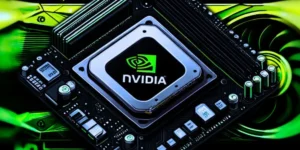The motherboard stands as the central nervous system of any computer, orchestrating the interaction between all internal components and allowing seamless communication throughout the system. As the primary circuit board, it connects the CPU, memory, storage devices, and peripheral interfaces into a unified framework. This article explores motherboards’ function, structure, and evolution, highlighting their essential role in computer performance and design.
Understanding the Role of the Motherboard
A motherboard is more than just a platform for connecting components; it is a complex, multi-layered infrastructure that enables a computer to operate as a cohesive unit. Every signal, data packet, and electrical current within a system relies on the motherboard’s layout and efficiency.
Motherboards determine a system’s compatibility and performance capabilities. They house the chipset, which governs CPU, memory, and storage communication. The form factor, socket type, and onboard features like power regulation, data buses, and connectivity ports shape the user experience and system performance. Without the motherboard, the individual parts of a computer could not function in harmony.
Key Components of a Motherboard
A closer look at the motherboard reveals a detailed arrangement of circuits, connectors, and embedded technologies, each contributing to the system’s overall functionality and stability.
CPU Socket and Chipset
The CPU socket is the physical interface that holds and powers the processor. It must match the CPU’s specific design, including pin layout and power requirements. Around the CPU socket lies the chipset, typically composed of a northbridge and southbridge or their modern equivalents, which manage data flow between the CPU, RAM, GPU, storage, and expansion cards. The chipset largely dictates the motherboard’s performance, overclocking, and hardware compatibility capabilities.
Memory Slots and Power Delivery
Memory slots, or DIMM slots, connect to RAM modules and influence how much memory the system can handle and how fast it operates. These slots are directly linked to the memory controller, often integrated into the CPU. Adjacent to these slots are power regulation circuits that ensure clean, stable electricity delivery to sensitive components. Voltage regulators and capacitors protect the CPU and RAM from power fluctuations and are critical for maintaining system reliability, especially under high-performance loads.
Expansion and Peripheral Interfaces
Motherboards feature several expansion slots, commonly PCIe (Peripheral Component Interconnect Express), which allow for installing graphics cards, sound cards, and other specialized hardware. USB headers, SATA connectors, and NVMe slots also enable connection to storage drives, external peripherals, and high-speed data devices. These interfaces define how scalable and adaptable a system can be, affecting performance and future upgrades.
Recent Innovations in Motherboard Technology
Substantial innovation has been made in motherboards to meet the demands of modern computing, driven by developments in processing power, miniaturization, and efficiency. These advancements aim to support new hardware standards and emerging computing needs.
Integration of High-Speed Connectivity
Modern motherboards integrate high-speed data technologies, including USB-C, Thunderbolt, PCIe Gen5, and Wi-Fi 6E. These features offer faster communication between the system and external devices, improving performance in data-heavy tasks such as gaming, content creation, and network computing. Built-in Bluetooth and Ethernet controllers enhance the board’s versatility, minimizing the need for additional expansion cards.
Enhanced Thermal and Power Management
Today’s motherboards have improved heat dissipation mechanisms, including larger heatsinks, heat pipes, and fan control headers. These features allow for more efficient CPU and power delivery zone thermal regulation, which is essential for high-performance tasks. Advanced power phases and intelligent control systems ensure stable voltage regulation even during overclocking or prolonged use.
BIOS and UEFI Advancements
The evolution from traditional BIOS to UEFI (Unified Extensible Firmware Interface) has transformed how users interact with motherboard firmware. UEFI provides a more intuitive interface, faster boot times, and better compatibility with modern storage devices. It also supports secure booting and extensive hardware configuration options, allowing users to fine-tune their system performance more effectively.
Applications and Impact of Motherboards
Motherboards are the foundation for various computing platforms, from personal desktops to servers and embedded systems. Each application area has specific requirements that influence motherboard design and capability.
Desktop and Gaming PCs
The motherboard plays a crucial role in defining system potential in desktop systems, especially those geared toward gaming or professional applications. It must support high-speed RAM, powerful GPUs, and robust storage configurations. Gaming-focused motherboards often include RGB lighting, overclocking support, and reinforced expansion slots to withstand heavy hardware use.
Laptops and Mobile Devices
Laptop motherboards are highly compact and customized to optimize space and energy efficiency. While they typically lack upgrade flexibility, they integrate components like RAM, Wi-Fi cards, and even the CPU directly into the board. This design allows for sleek, lightweight devices but limits user customization and repair options.
Industrial and Embedded Systems
Motherboards in industrial or embedded settings are built for reliability and durability. These systems often run 24/7 and require specialized interfaces like GPIO or serial ports to connect with machinery or sensors. Their design prioritizes stability over performance, frequently using fanless cooling and rugged materials to ensure consistent operation in challenging environments.
Challenges in Motherboard Design and Compatibility
Despite their advances, motherboards face several challenges related to compatibility, longevity, and integration with fast-moving hardware development trends.
Compatibility and Standardization
The rapid pace of innovation in CPUs, RAM standards, and peripheral technologies often renders motherboards obsolete within a few years. For users and system builders, this leads to complex decisions around compatibility, requiring careful selection of components based on chipset and socket type. Industry standards evolve frequently, but backward compatibility remains a significant hurdle in ensuring long-term usability.
Cost vs. Feature Balance
Motherboards span a broad price range, from basic models to premium boards with features. Determining the right balance between necessary functionality and cost efficiency can be difficult, especially for novice users. While premium boards offer enhanced features like more VRM phases, multiple NVMe slots, or advanced networking, not all users need these capabilities, making cost-effectiveness a recurring concern.
Durability and Quality Control
As motherboards become increasingly complex, quality control and durability become more critical. Inferior components or poor design can lead to hardware failures, electrical shorts, or system instability. Ensuring reliability over years of use, especially in high-stress environments, demands rigorous testing and high-quality materials, an area where manufacturing standards vary significantly.
The Future of Motherboards
The future of motherboards is shaped by shifts toward more efficient designs, integrated features, and adaptive capabilities. These changes reflect the broader direction of computing toward mobility, performance, and intelligent automation.
Modular and Configurable Platforms
Emerging trends suggest the rise of modular motherboard designs that offer easier upgrades and repairs. These boards may feature swappable components or customizable interfaces that adapt to specific use cases, extending system longevity and reducing electronic waste.
AI-Enhanced System Management
Motherboards are beginning to incorporate AI-powered diagnostic and optimization tools. These systems monitor temperature, power usage, and workload patterns, automatically adjusting fan speeds, voltage delivery, and resource allocation to optimize performance. This adaptive functionality offers smarter, more efficient computing with less manual intervention.
Support for Emerging Technologies
As new technologies like DDR5 RAM, PCIe Gen6, and next-generation CPUs enter the market, motherboards will evolve to support their higher speeds and demands. Additionally, greater emphasis on energy efficiency and compact form factors will continue to drive innovation in layout, cooling, and component integration.
Conclusion
Motherboards are the silent coordinators of the computing world, ensuring every component works smoothly and efficiently. Their design, capabilities, and integration influence system performance, expandability, and reliability. From casual users to professional builders and engineers, understanding the motherboard’s role is essential for making informed decisions about hardware. As technology evolves, so will motherboards, adapting to the growing demands of speed, connectivity, and intelligent automation while remaining the backbone of modern computing systems.










